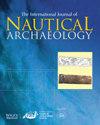Mast-step Coins in Roman Ships: Votive Offerings to Isis Pelagia?
IF 0.6
3区 历史学
0 ARCHAEOLOGY
International Journal of Nautical Archaeology
Pub Date : 2023-01-02
DOI:10.1080/10572414.2023.2203323
引用次数: 0
Abstract
ABSTRACT Mast-step coins have been discovered in Roman shipwrecks dating from the 2nd century BCE to the 4th century CE, and their placement at the foot of the ship’s mainmast was a deliberate act with significant maritime and religious meaning. This article argues that, in antiquity, mast-step coins were votive offerings to a deity associated with the mast and sails of ancient sailing vessels, and it is proposed that this deity was Isis Pelagia, the inventor of navigation and mistress of the sea. Through a discussion of Isis Pelagia’s iconography and other aspects of Isis’ cult, including her sailing festivals and aretalogy, it is posited that the mast came to symbolize the goddess whose natural place was on the decks of Roman ships, holding their billowing sails and guiding them safely to shore. Allegorically, these coins may thus have been placed at the feet of Isis Pelagia.罗马船上的桅杆台阶硬币:向伊西斯·佩拉吉亚献上的誓言?
摘要:公元前2世纪至公元4世纪的罗马沉船中发现了桅杆梯级硬币,它们被放置在船主桅的底部是一种具有重大海事和宗教意义的蓄意行为。这篇文章认为,在古代,桅杆台阶硬币是对与古代帆船的桅杆和帆有关的神的还愿祭品,有人认为这个神是航海的发明者和海洋女神伊希斯·佩拉吉亚。通过对伊希斯·佩拉吉亚的肖像画和伊希斯崇拜的其他方面的讨论,包括她的帆船节和航海史,人们认为桅杆象征着女神,她的自然位置是在罗马船只的甲板上,握住翻滚的船帆,引导他们安全上岸。据称,这些硬币可能因此被放置在伊西斯·佩拉吉亚的脚下。
本文章由计算机程序翻译,如有差异,请以英文原文为准。
求助全文
约1分钟内获得全文
求助全文
来源期刊

International Journal of Nautical Archaeology
ARCHAEOLOGY-
CiteScore
1.40
自引率
20.00%
发文量
30
期刊介绍:
The International Journal of Nautical Archaeology is a forum for the exchange of ideas and research relevant to all aspects of nautical and maritime archaeology. Published twice a year in print and online, each issue of 224 pages contains peer-reviewed original articles, notes and book reviews. IJNA addresses the theory and practice of archaeology and related academic disciplines which investigate human associations with water and waterborne craft of all periods throughout the world, on seas and inland waters. Aiming to encourage a fuller understanding of the maritime past within its wider context, IJNA keeps readers abreast of the latest discoveries, new interpretations and theoretical approaches.
 求助内容:
求助内容: 应助结果提醒方式:
应助结果提醒方式:


